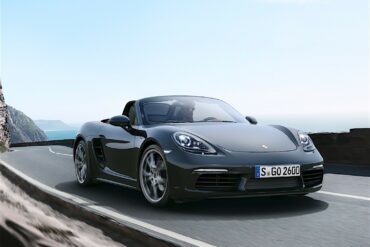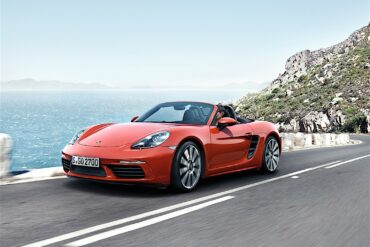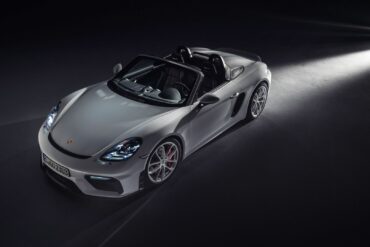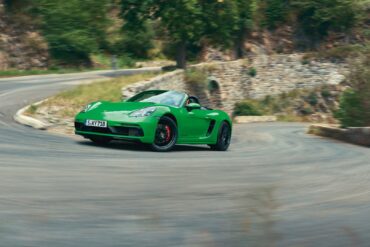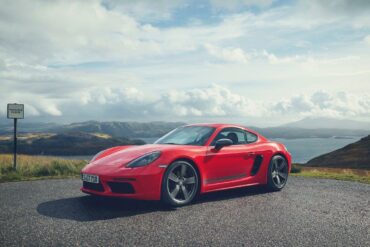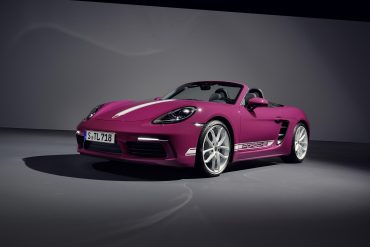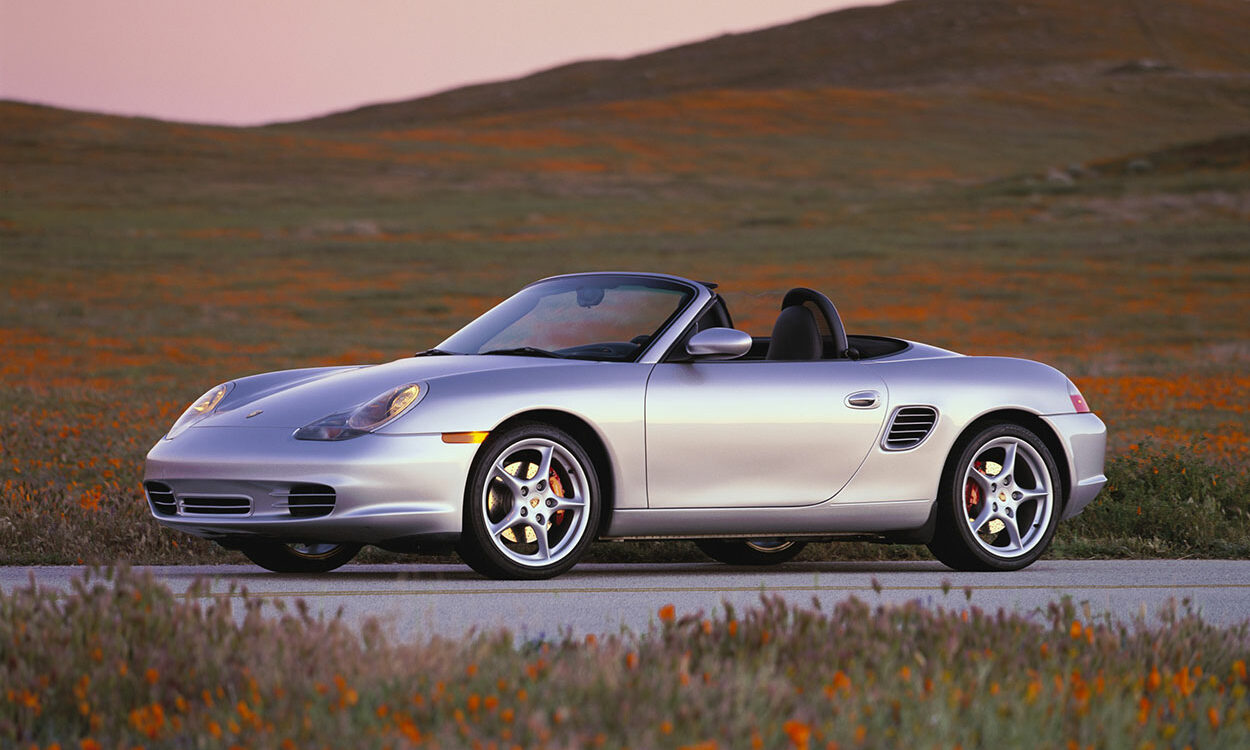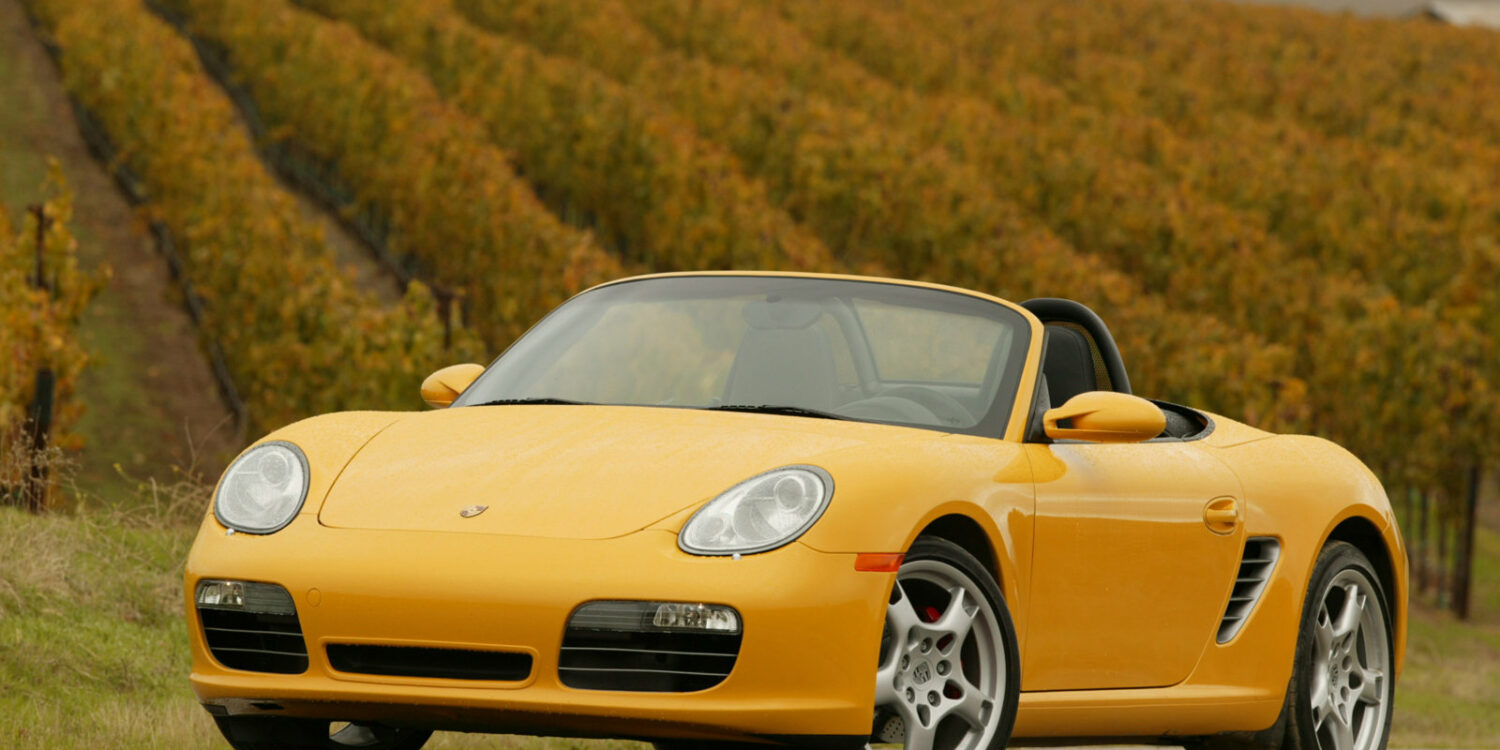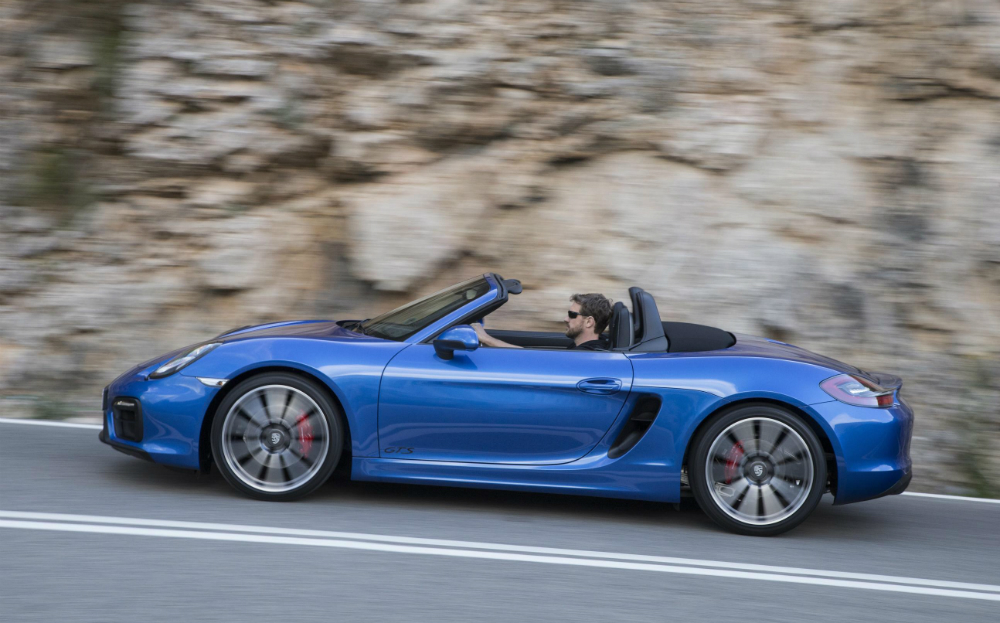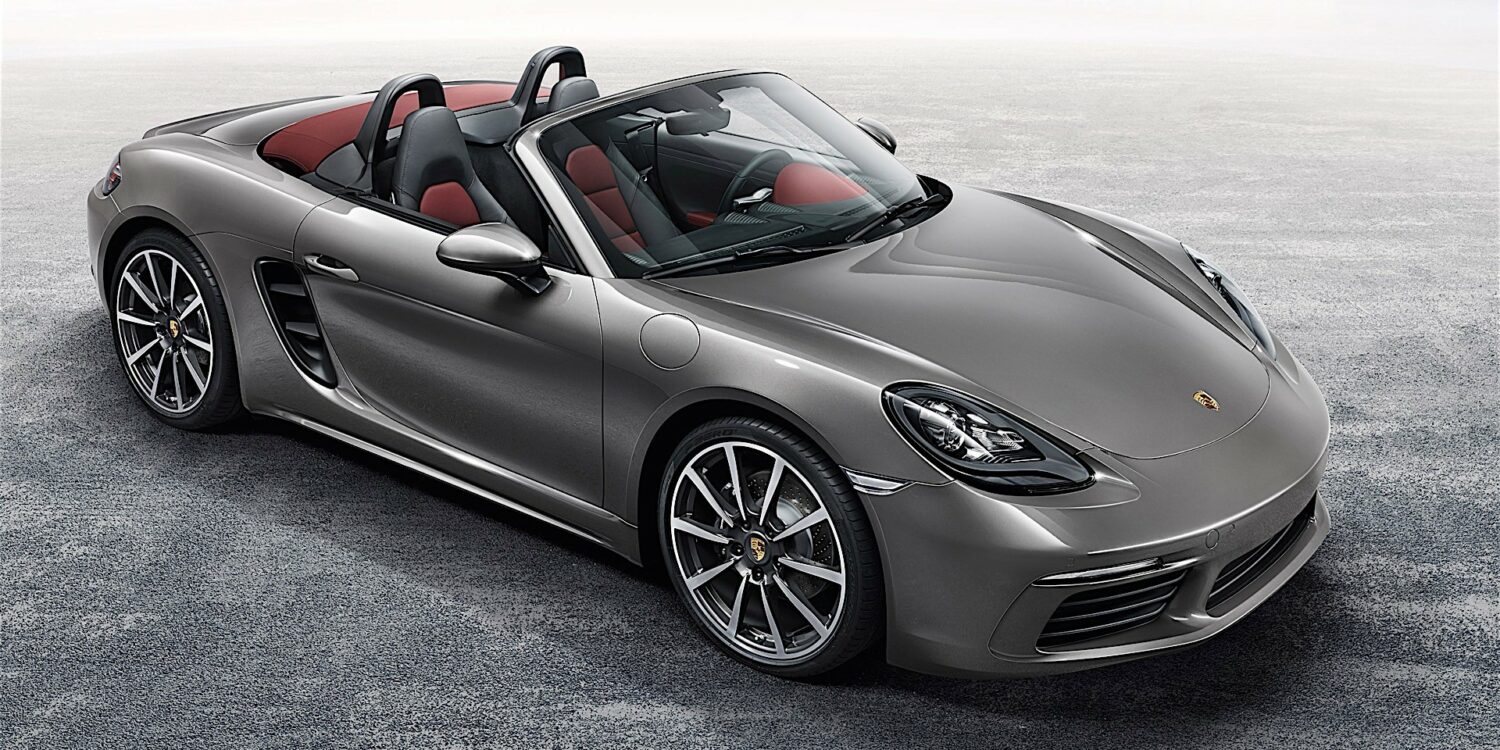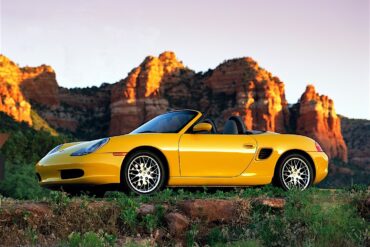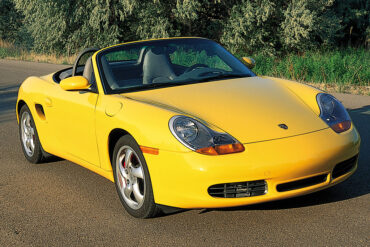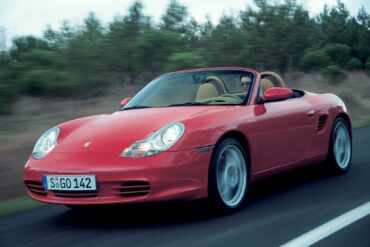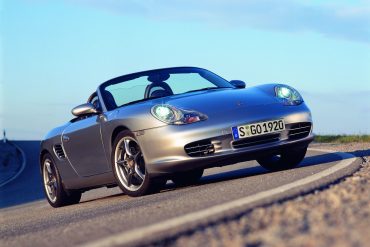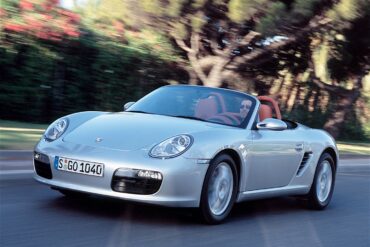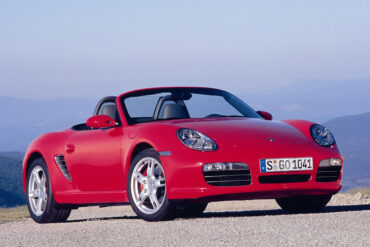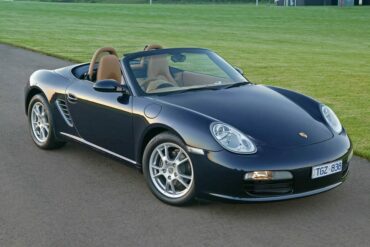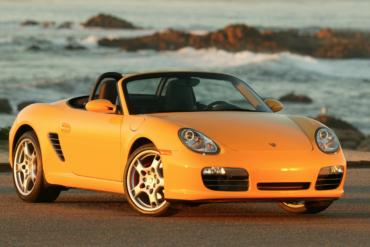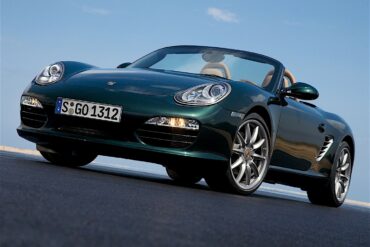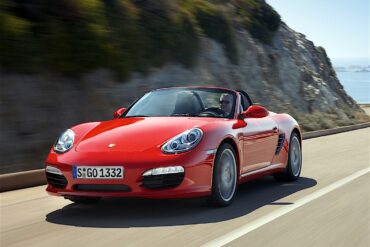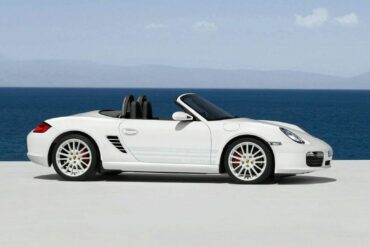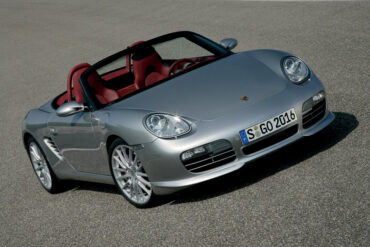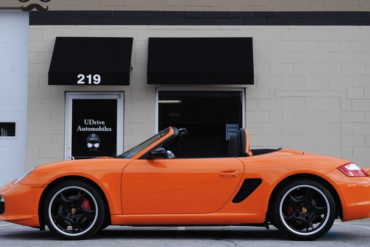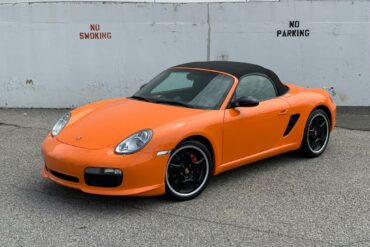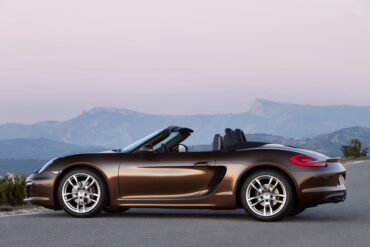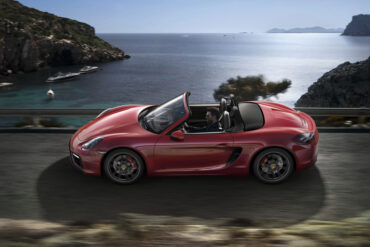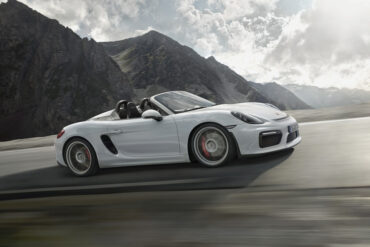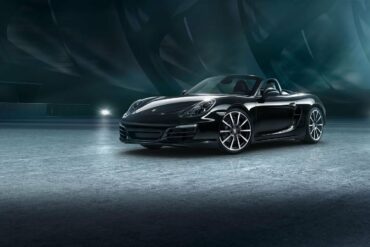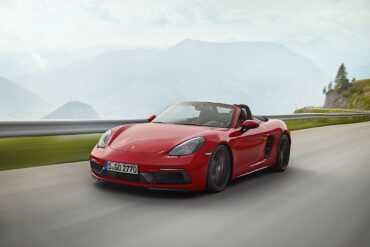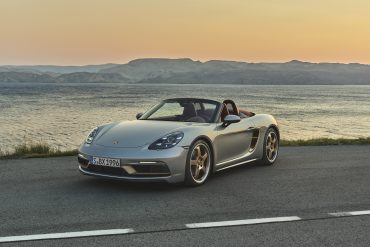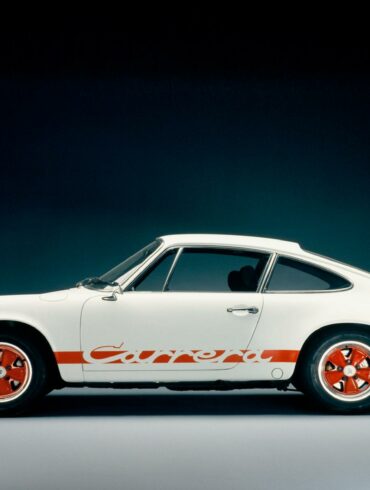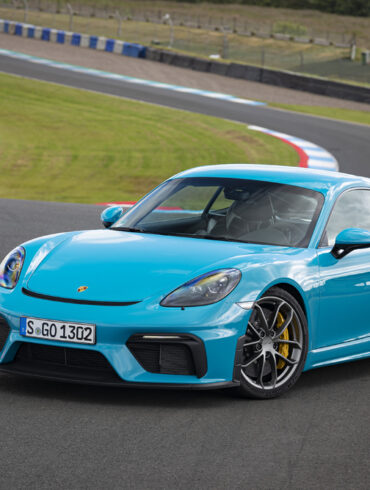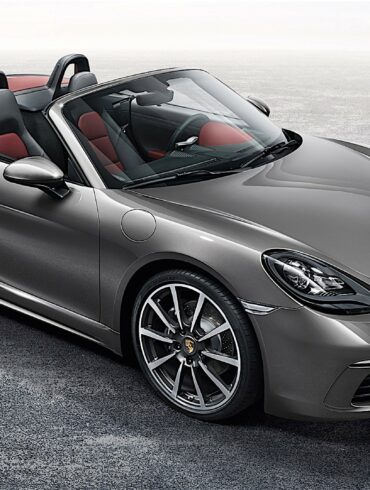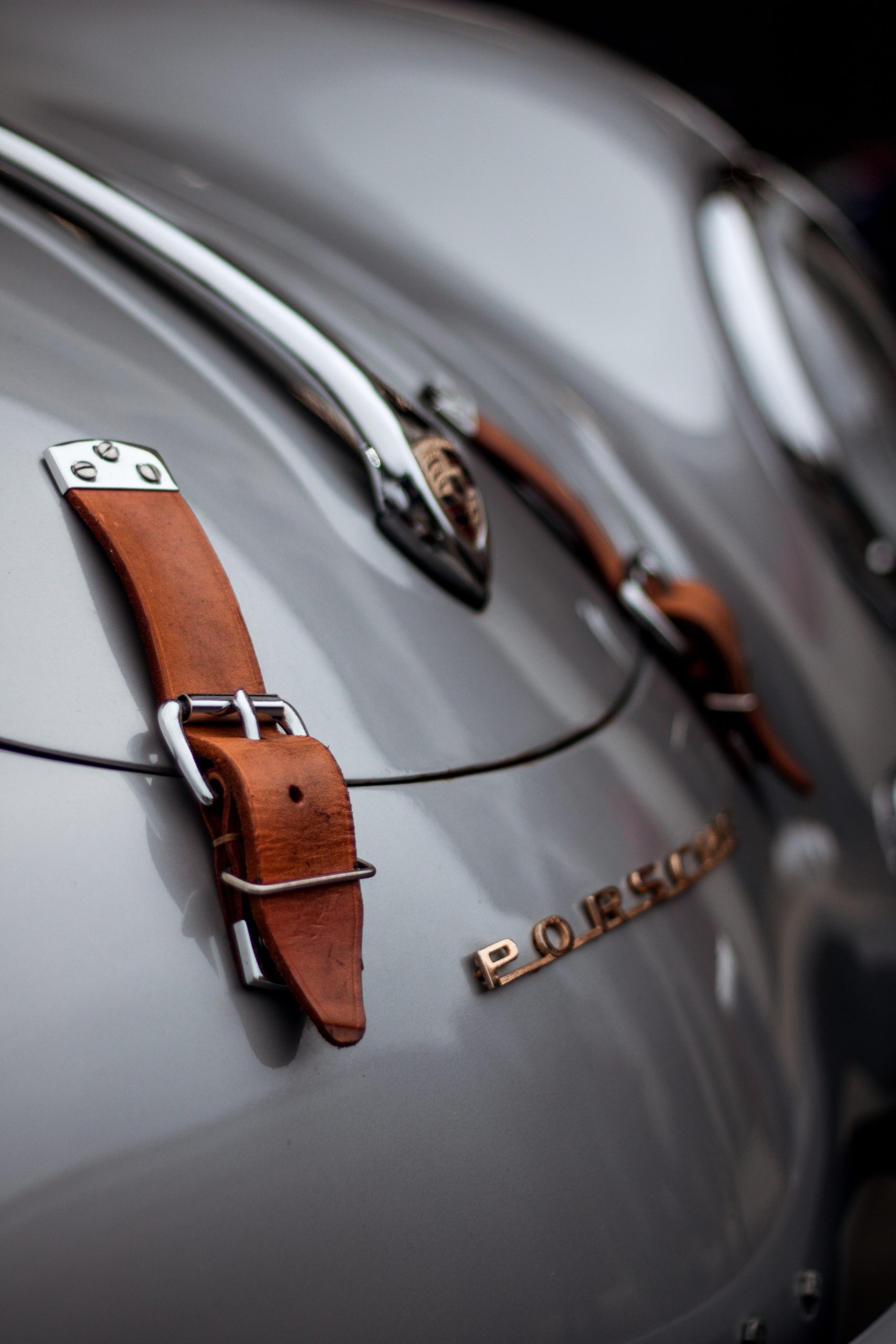Welcome to the four generation Boxster. The base Boxster was powered by a twin-turbo 2.0-liter direct-injection gasoline unit. It offered a total output of 300 hp and it was paired as standard with a 6-speed manual, while a 7-speed automatic (PDK – dual-clutch) was on the options list. In terms of design, it gets a more modern look and feel and the interior is upgraded. More tech, more power and more speed. The only downside is the loss of the aural pleasure of a flat 6 engine that is naturally aspirated and loves to rev to the sky.
Porsche Boxster
Ultimate Model Guide
Current 718 Boxster Lineup / Boxster Generations / Every Boxster Model Ever
The Boxster was initially unveiled as a concept in 1993 at the Detroit Auto Show, before going on sale in the summer of 1996 (as a 1996 model year in the United States). The first 986-generation Boxster had a mid-mounted 2.5-liter naturally aspirated flat-six that was good for 201 horsepower and 181 lb-ft of torque. It had a five-speed manual transmission or an optional five-speed Tiptronic automatic. The car received a significant update in 1999 for the 2000 model year, with a bigger base engine, tuned intake runners, and a more powerful S model. Following customer feedback, the base 2.5-liter flat-six was enlarged to 2.7 liters, resulting in an increase of 16 horsepower and 11 lb-ft of torque. The S model got a 3.2-liter naturally aspirated flat-six making 250 horsepower and 225 lb-ft of torque, as well as a six-speed manual gearbox, bigger cross-drilled brakes from the 996, Carrera wheels, upgraded suspension components, a third radiator up front, and a dual-exit exhaust. It has a higher 7200-rpm redline, and was able to sprint to 60 mph in 5.2 seconds when new. The 986 received yet another refresh from Porsche in 2003. Output from the base 2.7-liter car grew to 225 horsepower, while torque remained the same at 192 lb-ft. For the 986’s final model year, 2004, Porsche introduced the 550 Spyder 50th Anniversary edition Boxster, based on the S model, it was the most powerful first-gen Boxster produced, it made 264 horsepower from its 3.2-liter flat-six.
The second generation Porsche Boxster came out in 2004 at the Geneva Motor Show and shared almost the same design with the first version of the car. It also shared a lot of components with its 997 generation 911 sibling which was released the same year. The second generation Boxster was known as the 987. Design wise, the second generation Boxster had distinctive front styling with different triangular headlights and a unique front fascia. The front air intakes got redesigned, as well as the rear bumper and stoplights. The 987 Boxster's base 2.7-liter engine and 3.2 Boxster S were largely carried over from the late 986, but a 12 lb weight savings was realized by eliminating the cast-iron bearing girdle inserts. During the 2006 model year, Porsche incorporated a larger ball bearing for the support of the intermediate shaft at the flywheel end, which mostly mitigated the infamous intermediate shaft (IMS) bearing issues that plagued the M96 series. The 2007 Boxster received engine updates to match those of its hardtop Cayman stablemate. This consisted of the VarioCam Plus two-stage intake valve lift to both the base and S versions. The base five-speed manual was no longer Audi-based but made by Japanese supplier Aisin; the Boxster S six-speed retained the Getrag unit. Porsche introduced the face-lifted 987 for the 2009 model year. The updated Boxster featured a family of all-new engines with new designation and direct fuel injection (DFI) for the 3.4-liter S versions of the 987.2 and for all 997.2s; the base model 2.9-liter 987.2 had port fuel injection. The other major change for the 987.2 was the replacement of the optional torque converter-equipped Tiptronic automatic transaxle with a dual-clutch automated transaxle that Porsche dubbed PDK.
The third generation of Boxster was the 981 generation and frankly it is our favorite here at Stuttcars. Changes includes a body shell that was 17 percent lighter than that of the 987 thanks to an increased usage of aluminum construction, along with strategic use of high-strength steel in key areas. This kept the curb weight to around 3,000 lbs, despite being a larger car than its predecessor. The 981 Boxster was powered by the MA1-series flat-six, with the base engine's displacement reduced by 200cc to 2.7 liters, but this was more than made up for by replacing the base 987.2's port fuel injection system with DFI. The optional "Sport Chrono" package added dynamic transmission mounts, which functioned similarly to the optional magnetorheological mounts used on the engine side of the rear-engined 991. The 981's chassis and suspension were similar to the 991 Porsche 911, with a 60 mm longer wheelbase and increased front track by 36-48 mm depending on front wheel offset. The front suspension geometry was revised to increase its resistance to braking dive, and the rear suspension had much greater resistance to dynamic toe changes than did that of the 987.
Ever-stringent government fuel economy and CO2 emissions standards forced Porsche to downsize and turbocharge its entire range of engines. This meant that the marketing department leaned on the flat-four heritage of the 550 Spyder and 718 race cars, dubbing the internally-designated 982 Boxster and Cayman models as the 718. The MA2-based flat-fours of the base and S versions of the Boxster had more varied specifications than any of their predecessors. The 2.0-liter MA2/20 of the base model had a turbocharger with a conventional internal wastegate for boost control, while the 2.5-liter, 350-hp MA2/22 of the Boxster S had a variable turbine geometry turbocharger in addition to a conventional internal wastegate to reduce exhaust backpressure. Porsche fans who missed the howl of a flat-six in a new mid-engined roadster collectively rejoiced with the introduction of the 2019 Boxster Spyder, which featured an MA2-derived, naturally aspirated 4.0-liter flat-six, which generated 414 hp and revved to 8,000 rpm. This drivetrain reverted to the three-point mounting system of previous six-cylinder Boxsters. More recently, Porsche added the 4.0 L flat six to the GTS model, so enthusiasts can have their cake and eat it too.
Current 718 Boxster Lineup
The 718 Boxster is Porsche entry-level model. It is an exceptional sports cars package that is perfect for the daily driving and more spirited runs on weekends. Great balance, plenty of poke and pure driving enjoyment. What else could you want in a sports car? As we’ve become accustomed to over the years, Porsche’s 718 cars are available in both hardtop Cayman and drop-top Boxster guises. The good news recently is that the four-cylinder boxer engines that left us wanting more have now been joined by 4.0-litre flat sixes in the potent GTS models and the special-edition Spyder and GT4 cars. In typical Porsche fashion, the 2022 718 Cayman range is offered in up to six different variants, allowing customers more freedom to choose based on budget and other considerations. The entry-level 718 Cayman is at one end of the spectrum, and performance rapidly ramps up as you move on to the top-of-the-line Cayman GT4 RS at the other end. The 718 Cayman range has been spiced up with the punchy Cayman GT4 RS model, powered by a high-revving engine sourced from the acclaimed 911 GT3 RS. Other changes are mild for 2022 and include new paint options and additional customizations available for the cars.
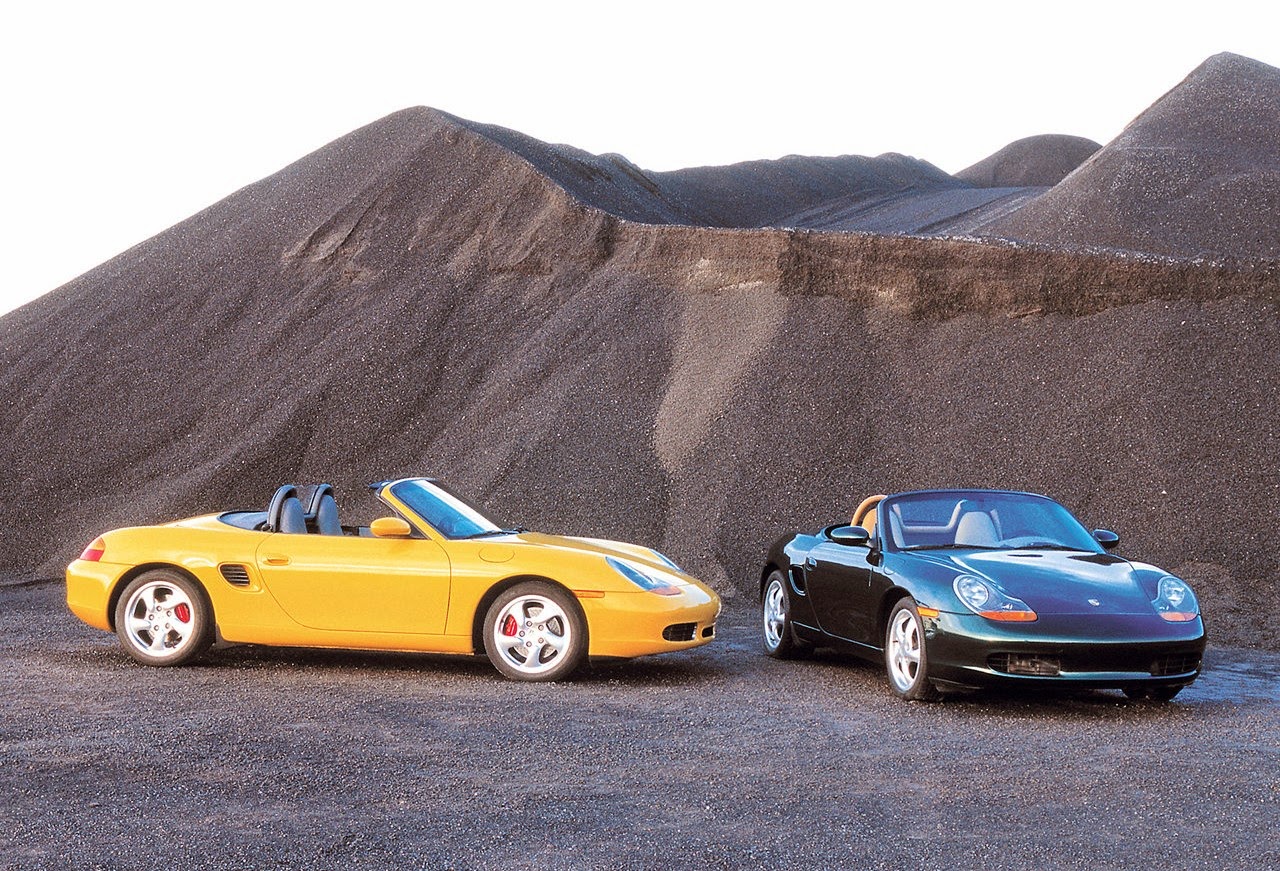
Porsche Boxster (1st Gen) (986) Models
There were two core models of Porsche Boxster for the first generation, the base Boxster and the Boxster S. The base Boxster came first as a 1997 model year car, powered by a 2.5 liter flat 6 engine and 201 hp. In 2000 the base Boxster got a larger 2.7 liter engine unit with more power and torque. It was the Boxster S launch as a 2000 model year car that got people most excited, with its bigger 3.2 liter engine and extra performance hardware. The model range received a minor facelift in 2002 that included some design updates including the plastic rear window was replaced by a smaller glass window with a heating element and the bumpers were changed slightly for a more defined. New wheel designs were made available. The interior received some updates including an updated steering wheel. Porsche installed a reworked exhaust pipe and air intake. The 986 Boxster production ended in 2004.
Porsche Boxster (1st Gen) (986) Special Models
There was only one special edition Boxster during the first generation. In 2004, the Boxster S Special Edition, also called 550 Spyder Boxster S Special Edition or S 550 Spyder 50th Anniversary Edition was introduced with a production run of just 1,953 cars. It paid homage to the 550 Spyder's year of introduction. These were all painted in GT Silver Metallic and had unique cocoa-brown full-leather interior as standard. Several other changes included a slightly more powerful engine.
Porsche Boxster (2nd Gen) (987) Models
There were two core models of Porsche Boxster for the second generation, the base Boxster and the Boxster S. Both second generation models were released as 2005 model year cars.Both got considerable power increases even though engine capacities stayed the same. Output of the standard 2.7-litre boxer engine increased from 228hp to 237hp, while the 3.2-litre engine for Boxster S was up 260 hp to 276 hp. For 2007 model year, Porsche introduced the Cayman and updated the models. The interior and exterior remained mostly the same, but the Boxster S received the Cayman S 3.4-liter flat six while the 2.7 in the Boxster received VarioCam Plus, which bumped horsepower up to 245 hp. In 2009, the model got another update. The 2.9-liter unit replaced the older 2.7-liter engine and offered 10 hp more. It was paired as standard to a 6-speed manual, and a 7-speed PDK (Porsche dual-clutch) automatic was available as an option. The Chrono Package featured the Launch-control system, which allowed the 2002 Boxster to cut an additional 0.1 seconds from the 0-100 kph (0-62 mph) time when compared with the regular PDK version, without the Chrono Package. For better handling, the Boxster was fitted as standard with Porsche Stability Management.
Porsche Boxster (2nd Gen) (987) Special Models
Several special edition cars were released during the second generation (987) Boxster. In November 2007, Porsche announced a commemorative RS60 Spyder edition of the Boxster to celebrate Porsche's 1960 win in the 12 Hours of Sebring in Florida. There were also a limited production Boxster S Porsche Design Edition 2 debuted in October 2008 as 2009 model which was basically a design exercise. Porsche unveiled its 2008 Limited Edition Boxster and Boxster S models that were inspired by the 2007 911 GT3 RS, with only 250 examples of each produced in brilliant orange. The most exciting special model was the Boxster Spyder. It was announced on 5 November 2009 and it was the lightest Porsche on the market at the time, weighing just 2,811 lbs (about 18- lbs lighter than a Boxster S). The lightweight diet made it an absolutely gem of a drive, especially with its sportier and firmer suspension setup and its inch lower ride height.
Porsche Boxster (3rd Gen) (981) Models
The standard Boxster was fitted with a new 2.7-litre flat-6 engine, and the Boxster S was fitted with the existing 3.4-litre engine but with revised performance. Both engines are equipped with a 6-speed manual gearbox and an optional 7-speed reworked PDK. Both manual and automatic models were available with several technical options including Porsche Torque Vectoring (PTV) and a Sport Chrono Package. The range was expanded in March 2014 with the addition of the 2015 model year GTS. It got slightly altered front and rear bumpers, the GTS black treatment and 15 hp more power from the 3.4-litre engine. Add some tasty hardware as standard and this is our pick of the 981 Boxster variants.
Porsche Boxster (3rd Gen) (981) Special Models
Porsche unveiled the Boxster Spyder special edition in April 2015 at the New York Auto Show. The styling of the car was similar to the previous generation Spyder, continuing the twin hump rear deck and manually operated canvas top. It also shared some styling with the Cayman GT4, using the same front and rear fascia. The engine is also shared with the Cayman GT4, but mildly detuned. It is a 3.8 litre flat-6, making this the largest and most powerful engine used in a Boxster at the time, rated at 287 kW (385 hp). This allowed the car to attain a top speed of 290 km/h (180 mph). It was also the lightest Porsche in the model lineup at the time, weighing 1,315 kg (2,899 lb) and it was an absolutely cracking car to drive. A future classic for sure. The other special edition Boxster 981 was the Black Edition, which was basically a base 981 Boxster with black color treatments and some options thrown in as standard.
Porsche 718 Boxster (4th Gen) (982) Models
The 718 Boxster was introduced in January 2016, and premiered at the 2016 Geneva Motor Show. The 718 featured two new horizontally-opposed flat-4 turbocharged engines at 2.0-litre (Boxster/Cayman) and 2.5-litre (Boxster S/Cayman S) displacement with increased torque and horsepower with lower fuel consumption. The S model turbocharger utilizes Variable Turbine Geometry (VTG) technology. The 718 T models were released for the 2020 model year as more sport-oriented versions of the base 718 models. Later in October 2017, the GTS models were announced with their 2.5-litre engines rated at 360 hp. Since 2020, the GTS 4.0 model has been offered for both 718 models. The new model features the 4.0-litre flat-6 from the Cayman GT4 and Boxster Spyder, however de-tuned to 394 hp.
Porsche 718 Boxster (4th Gen) (982) Special Models
To celebrate 25 years of the Boxster, Porsche announced a limited edition 718 Boxster 25 for the 2022 model year. Restricted to 1,250 units worldwide, the car is based on the GTS 4.0 model which makes it a very interesting proposition for the collector looking for something fun to drive too.
Join Our Porsche Community
Sign up for our weekly Porsche newsletter. The latest Porsche news, rumors, reviews and more delivered to your inbox. Cool Porsche stuff perfect for the flat-six obsessed.


